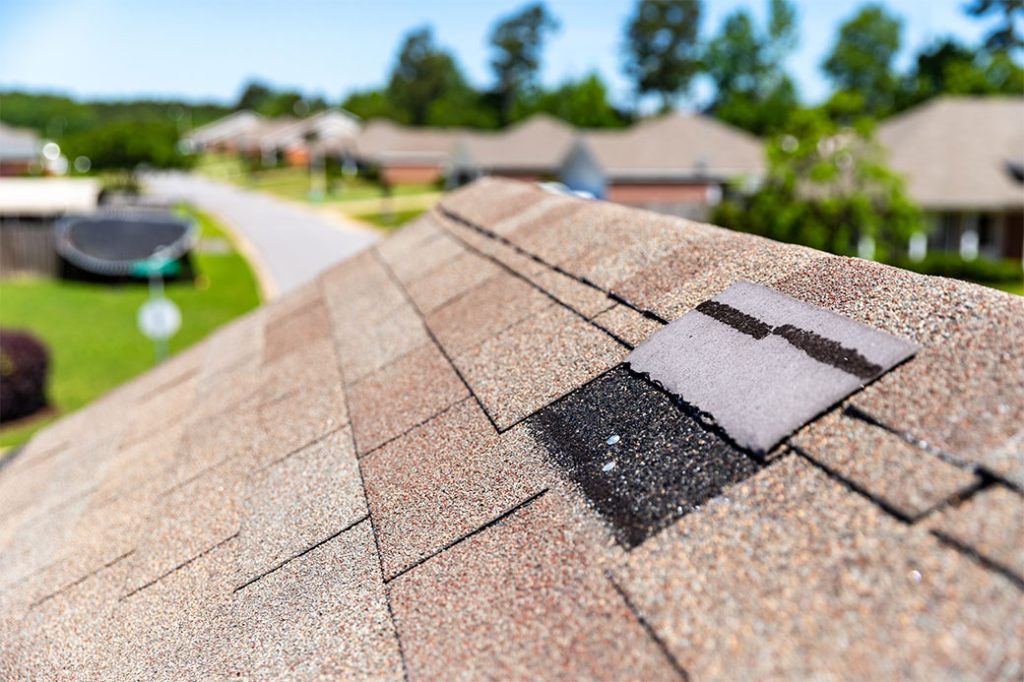Roof leaks are an all-too-common issue that can plague homeowners, leading to a host of other problems.
Understanding the causes of roof leaks, learning how to detect them early, and implementing effective remedies are essential for preserving the integrity of your home. We’re here to help you better comprehend the problem and take appropriate action when faced with this frustrating challenge.

I. Causes of Roof Leaks
Roof leaks stem from various factors and understanding these causes is crucial to address the problem.
One of the primary reasons for roof leaks is the age, wear, and tear that roofs endure over time. Exposure to harsh weather elements like rain, snow, UV rays, and wind gradually weakens the roof’s materials. As the roof ages, these issues become more prevalent and increase the likelihood of leaks.
Another common cause is damaged shingles. Broken, cracked, or missing shingles create vulnerable points in the roof, allowing water to penetrate the underlying layers and infiltrate the interior of the home. Shingle damage can result from various factors including hailstorms, falling debris, or poor installation.
Clogged gutters also contribute significantly to roof leaks. When they become obstructed with leaves, dirt, and twigs, rainwater can’t properly drain from the roof. Instead, the water accumulates and increases the risk of leaks and water damage.
Flashing issues are another source of roof leaks. Flashing seals gaps around chimneys, vents, skylights, and other roof protrusions. It can deteriorate over time or be improperly installed. This compromised flashing allows water to get into the roof.
II. Detecting Roof Leaks
Do your best to identify roof leaks sooner than later. Here are some ways to detect roof leaks:
Interior Signs:
Water stains on ceilings and upper walls are common indicators of a roof leak. Peeling paint or wallpaper, as well as mold or mildew growth, may also indicate a problem. Inspecting the attic for signs of dampness is always a good idea when looking for hidden leaks.
Exterior Signs:
Visible damage on the roof’s exterior can provide clues about potential leaks. Check for cracked caulking around roof penetrations, damaged or missing shingles, and deteriorated flashing.
Regular Inspections:
Conducting periodic assessments of your roof, especially after severe weather events, can help you catch roof issues early. You can use binoculars to assess the roof’s condition from the ground if you’re not able to get on the roof.
III. Remediation and Prevention
Here are some good measures to take after you’ve identified a leak:
Quick Repairs:
Address any roof leaks as soon as you detect them. You can prevent the problem from escalating and getting out of control.
Maintain Gutters:
Regularly inspect gutters to see if there’s adequate water drainage from the roof. Removing debris can reduce the risk of water accumulation and subsequent leaks.
Replace Damaged Shingles:
If you notice any damaged shingles, replace them to prevent water from penetrating the roof layers.
Check and Repair Flashing:
Regularly inspect the flashing and repair or replace any damaged sections. Sealed flashing is essential for maintaining a watertight barrier on the roof.
Insulate and Ventilate:
Make sure your attic has enough insulation and ventilation. Insulation helps prevent ice dams from forming, while proper ventilation reduces moisture buildup, saving your roof from potential leaks.
Professional Maintenance:
Schedule annual or bi-annual roof inspections and maintenance performed by qualified roofing professionals. A Roofing professional can use their expertise to help identify and address minor issues before they develop into major problems.
Remember, taking action early is the key to maintaining a sturdy and leak-free roof. Only you can prevent roof leaks.
>>Click here for more info on finding water damage in your home.<<







